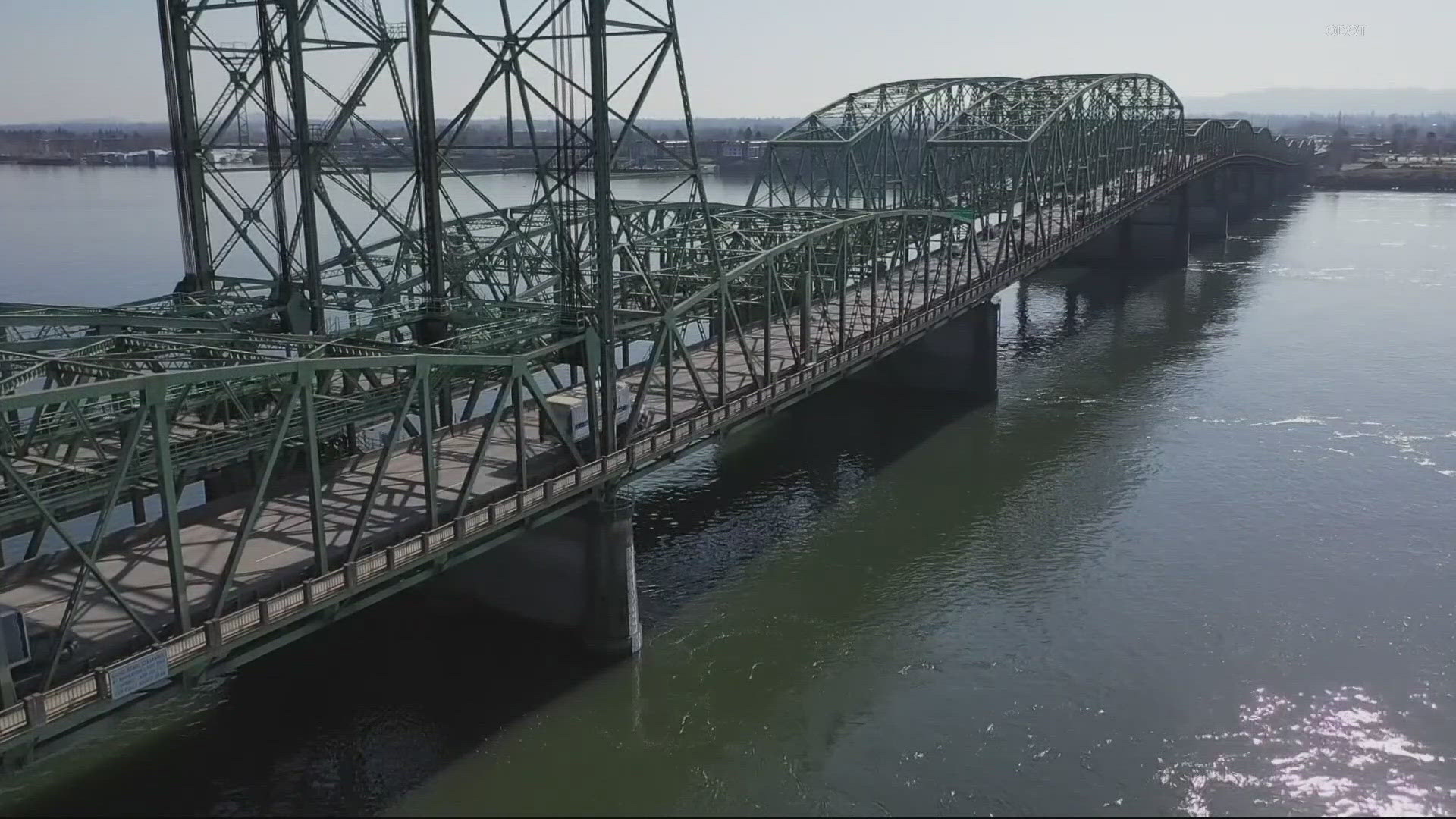PORTLAND, Ore. — The Interstate Bridge Replacement (IBR) project is set to hit a development milestone on Friday with the release of the program's Draft Supplemental Environmental Impact Statement, kicking off a 60-day comment period to gather public feedback about the team's proposed design for a new I-5 bridge across the Columbia River.
The megaproject aims to replace the current twin bridges, which are highly vulnerable to collapse in a major earthquake and have no shoulders and extremely narrow bike and pedestrian walkways. It would also extend light rail across the river to Vancouver and upgrade or replace several other I-5 bridges and interchanges to the north and south of the river.
The release of the Draft Supplemental Environmental Impact Statement (SEIS) is a key part of the federal environmental review process, and it's been delayed multiple times over the past couple years. Here are the answers to some of the top questions about what the document will include, what it won't, and why it's important:
What is an Environmental Impact Statement?
The National Environmental Policy Act requires federally-funded infrastructure projects to go through a detailed assessment of their benefits and impacts. The result is a document called an Environmental Impact Statement that compares two scenarios: one in which the project gets built as proposed, and one in which it does not.
The draft document is an early version released for public comment, and it will be the most detailed look at the project plan to date, examining its impacts on traffic, public transportation, river navigation, air and water quality, local land use and more. The public feedback will be incorporated into the Final Environmental Impact Statement next year.
Why is it a "supplemental" statement?
Remember the Columbia River Crossing (CRC)? The previous attempt at replacing the Interstate Bridge collapsed in 2013, but the project got far enough to produce a Final Environmental Impact Statement and win federal approval. When IBR launched in 2019, lawmakers and staff aimed to salvage much of the CRC work, including the Environmental Impact Statement.
The "supplemental" part signals that the IBR draft is officially an update to the CRC's evaluation, accounting for changes in the area near the bridge since 2013 and IBR design updates such as a new light rail route. The approach allows for a faster environmental review process, although critics have argued that it constrains the project into being too similar to the CRC.
Will it include an updated cost estimate?
No. The project's current estimated cost is $6 billion, with a possible range of $5 billion to $7.5 billion. But that estimate is almost two years old and likely out of date. A new estimate is in the works, but the IBR team wants to wait until the project gets further in the environmental review process, so it isn't expected until next summer.
The project is currently ahead of the game financially; its early budget called for at least $2.5 billion from three federal grants, and the first two ended up netting a combined $2.1 billion, with the $1 billion third grant application still pending. But if the new estimate pushes the cost higher next year, it remains to be seen if that will be enough to close the gap.
Will it resolve the drawbridge question?
No. The IBR team's preferred replacement would cross the main river channel at 116 feet, eliminating the current bridge's lift span and associated traffic jams. But the current bridge rises to 178 feet when fully lifted, and the U.S. Coast Guard has signaled reluctance to approve a permit for the new project if it doesn't maintain that level of river clearance.
The Columbia River Crossing won approval by offering to compensate impacted companies upriver. IBR is trying to do the same, but in case the Coast Guard says no, the team submitted three bridge designs for review: double-deck, single-deck and drawbridge. It'll have to be narrowed down to one eventually, but all three are still in play at the Draft SEIS stage.
How do I read it and comment?
Click here. The IBR project team has set up a landing page for the Draft SEIS on its website. Once the draft is published, the landing page will be updated to include links to the document and instructions for how to provide comments via an online form or through email, voicemail or written mail.
The public comment period runs through Nov. 18, and will also include public hearings where people will be able to sign up to testify. A hard copy of the document will also be available for review at the IBR project office, according to the website, and multiple in-person and virtual office hour sessions are scheduled during the next two months.

